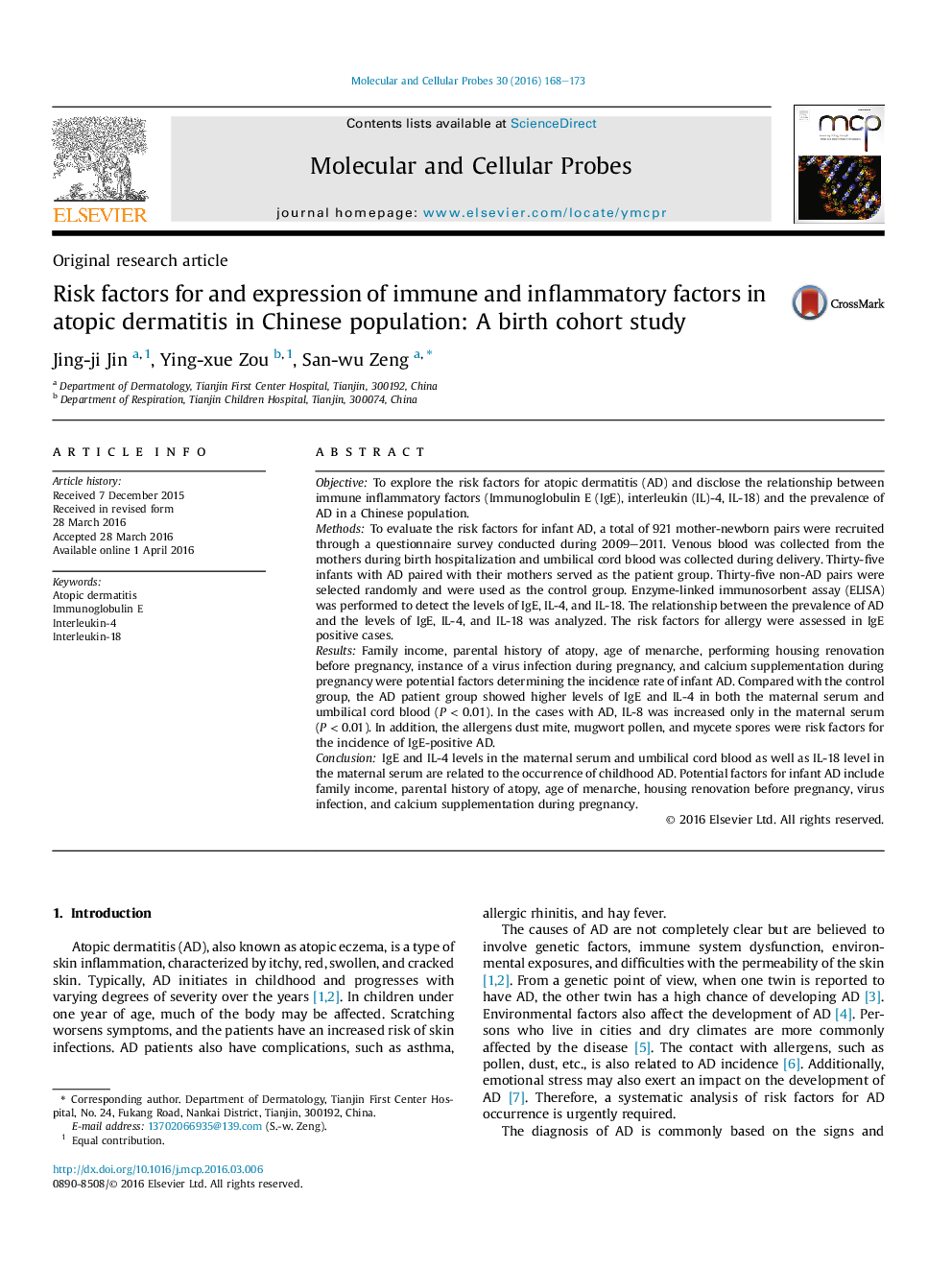| کد مقاله | کد نشریه | سال انتشار | مقاله انگلیسی | نسخه تمام متن |
|---|---|---|---|---|
| 2199589 | 1099601 | 2016 | 6 صفحه PDF | دانلود رایگان |
• 921 mother-newborn pairs were recruited to evaluate risk factors for infant AD.
• Family income, parental history of atopy, age of menarche, etc. were analyzed.
• IgE and IL-4 as well as IL-18 are related to the occurrence of childhood AD.
ObjectiveTo explore the risk factors for atopic dermatitis (AD) and disclose the relationship between immune inflammatory factors (Immunoglobulin E (IgE), interleukin (IL)-4, IL-18) and the prevalence of AD in a Chinese population.MethodsTo evaluate the risk factors for infant AD, a total of 921 mother-newborn pairs were recruited through a questionnaire survey conducted during 2009–2011. Venous blood was collected from the mothers during birth hospitalization and umbilical cord blood was collected during delivery. Thirty-five infants with AD paired with their mothers served as the patient group. Thirty-five non-AD pairs were selected randomly and were used as the control group. Enzyme-linked immunosorbent assay (ELISA) was performed to detect the levels of IgE, IL-4, and IL-18. The relationship between the prevalence of AD and the levels of IgE, IL-4, and IL-18 was analyzed. The risk factors for allergy were assessed in IgE positive cases.ResultsFamily income, parental history of atopy, age of menarche, performing housing renovation before pregnancy, instance of a virus infection during pregnancy, and calcium supplementation during pregnancy were potential factors determining the incidence rate of infant AD. Compared with the control group, the AD patient group showed higher levels of IgE and IL-4 in both the maternal serum and umbilical cord blood (P < 0.01). In the cases with AD, IL-8 was increased only in the maternal serum (P < 0.01). In addition, the allergens dust mite, mugwort pollen, and mycete spores were risk factors for the incidence of IgE-positive AD.ConclusionIgE and IL-4 levels in the maternal serum and umbilical cord blood as well as IL-18 level in the maternal serum are related to the occurrence of childhood AD. Potential factors for infant AD include family income, parental history of atopy, age of menarche, housing renovation before pregnancy, virus infection, and calcium supplementation during pregnancy.
Journal: Molecular and Cellular Probes - Volume 30, Issue 3, June 2016, Pages 168–173
